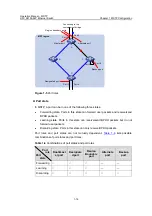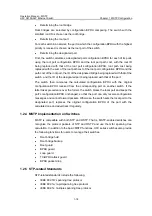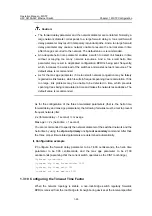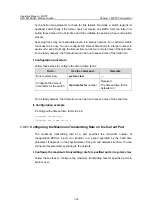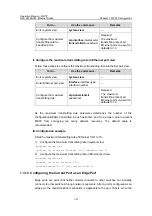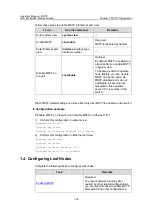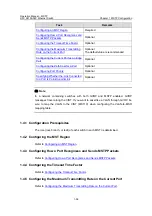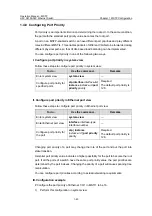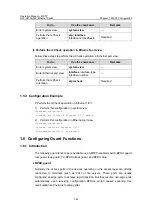
Operation Manual – MSTP
H3C S3100-52P Ethernet Switch
Chapter 1 MSTP Configuration
1-30
by the hello time parameter to check for link failures. Normally, a switch regards its
upstream switch faulty if the former does not receive any BPDU from the latter in a
period three times of the hello time and then initiates the spanning tree recalculation
process.
Spanning trees may be recalculated even in a steady network if an upstream switch
continues to be busy. You can configure the timeout time factor to a larger number to
avoid such cases. Normally, the timeout time can be four or more times of the hello time.
For a steady network, the timeout time can be five to seven times of the hello time.
I. Configuration procedure
Follow these steps to configure the timeout time factor:
To do...
Use the command...
Remarks
Enter system view
system-view
—
Configure the timeout
time factor for the switch
stp timer-factor
number
Required
The timeout time factor
defaults to 3.
For a steady network, the timeout time can be five to seven times of the hello time.
II. Configuration example
# Configure the timeout time factor to be 6.
<Sysname> system-view
[Sysname] stp timer-factor 6
1.3.11 Configuring the Maximum Transmitting Rate on the Current Port
The maximum transmitting rate of a port specifies the maximum number of
configuration BPDUs a port can transmit in a period specified by the hello time
parameter. It depends on the physical state of the port and network structure. You can
configure this parameter according to the network.
I. Configure the maximum transmitting rate for specified ports in system view
Follow these steps to configure the maximum transmitting rate for specified ports in
system view:

